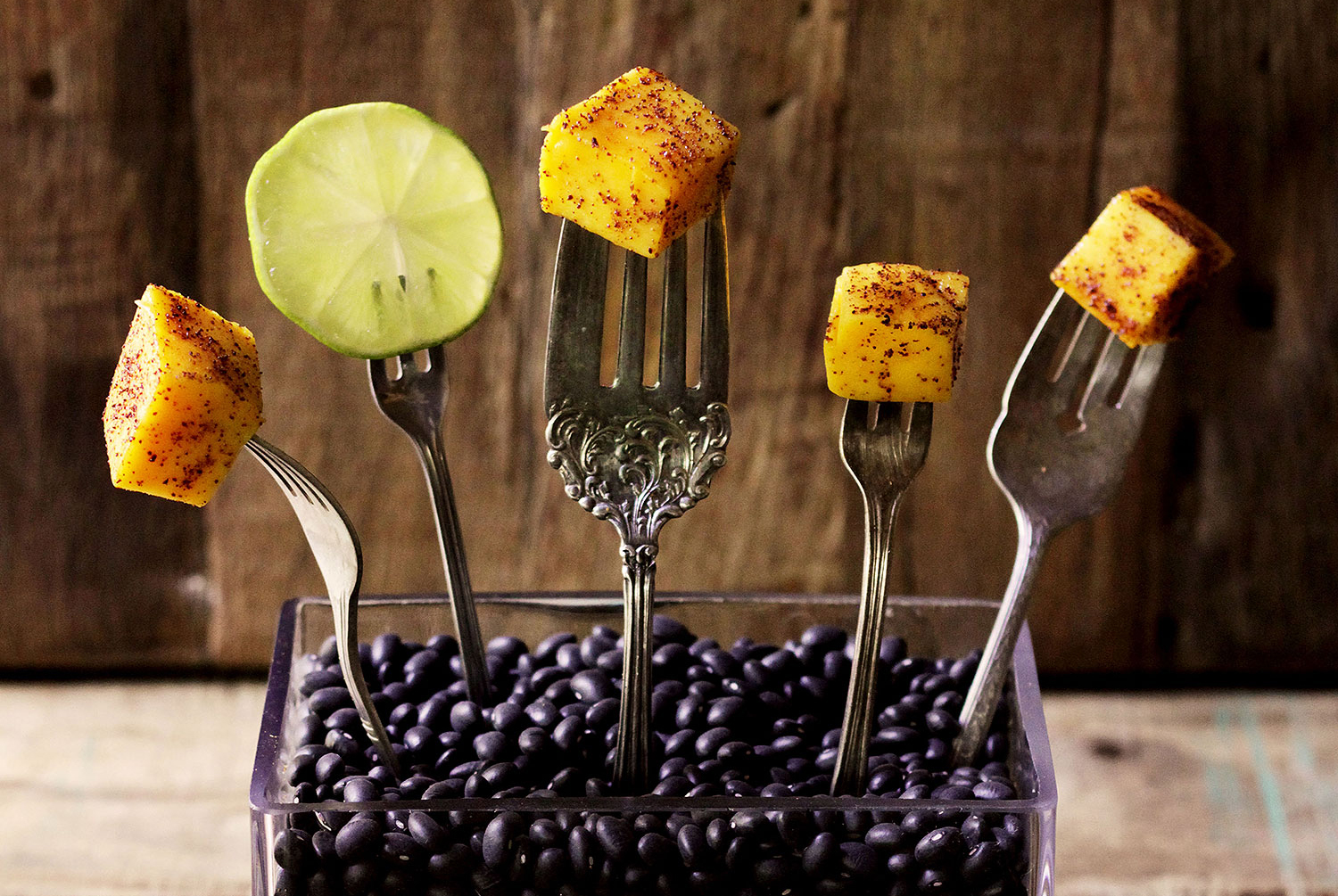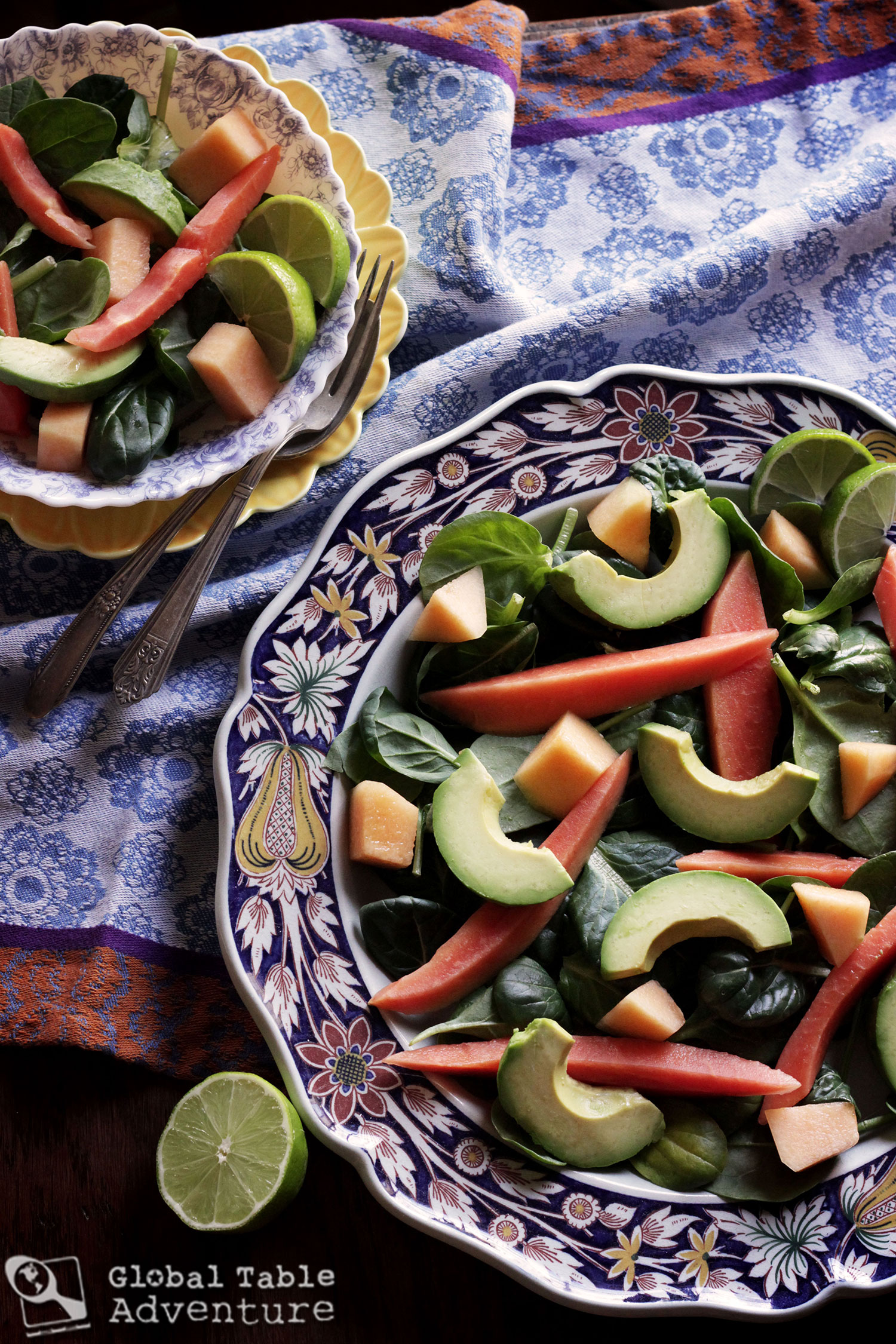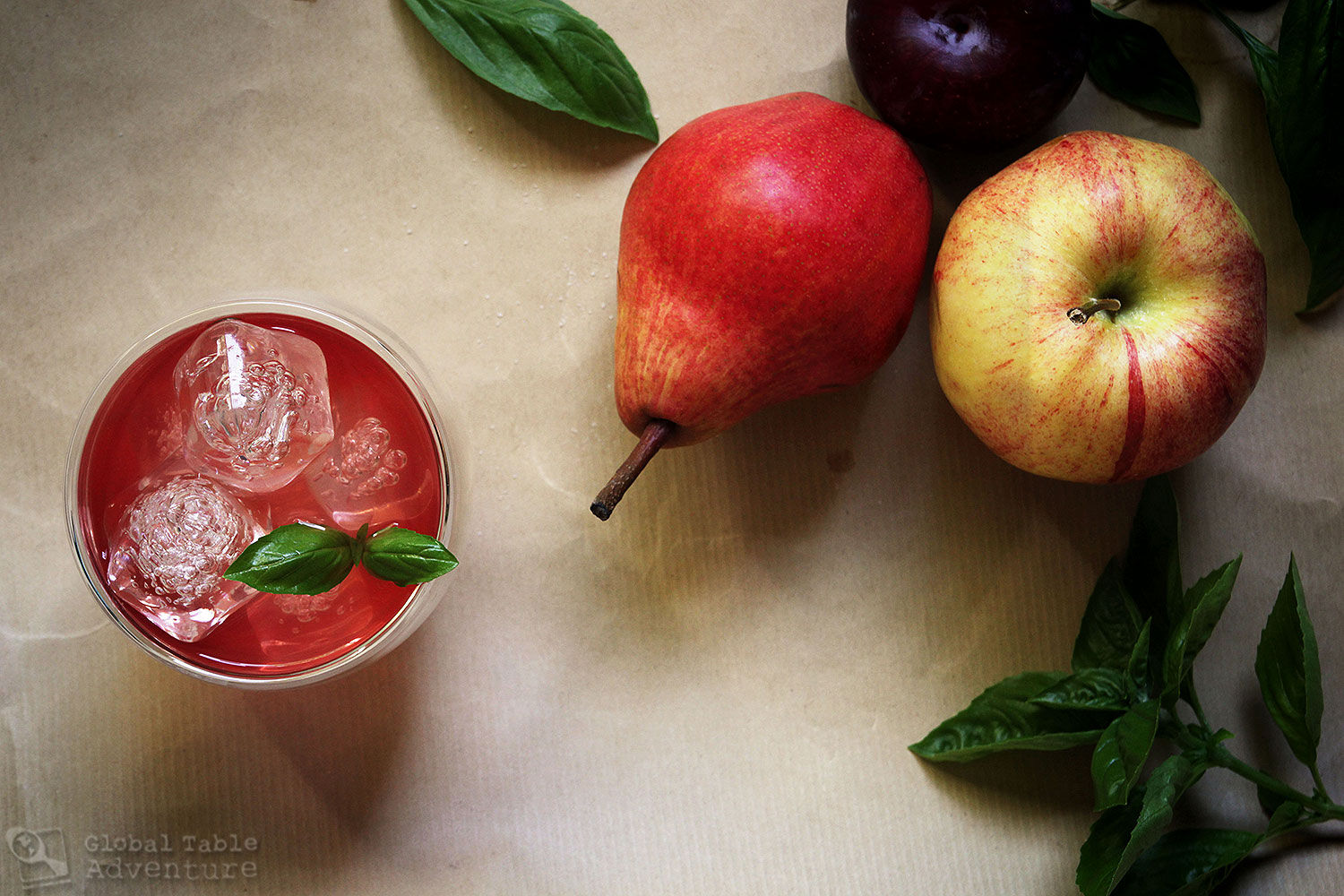
Today, we enjoy an autumn fruit punch from the heart of Uzbekistan’s Kyzyl Kum desert, shared with me by Paul Salopek, National Geographic fellow and journalist. The chilled punch quenches with ripe pear, apple, and plum, while a sprig of basil lends the memory of summer. An opportunity for our children At my grocery store, punch typically comes in a bottle or, more commonly, a box with a straw. At seven-years old, Ava has never considered what “punch” is, or how it might be made. This a good opportunity to remind our children that fruit punch is made from soft, sweet fruit – a seasonal thing, reliant on agreeable weather and the absence of pests. Punch came before refrigerators and standardization, each batch unlike the next, tasting only ‘of the moment.’ Once young children “get” the concept behind punch, they may begin to taste the individual fruits (or at least show interest in trying). Let them play with the recipe, and encourage them to invent their own favorite punch. After all, it’s as simple as stewing hunks of …
Read More

These golden morsels are inspired by a place where giant fairy chimneys rise above yellow brick roads, leading travelers past a network of underground cities. It sounds like fantasy. But this surreal scene lives – as real as you and me – in Cappadocia, Turkey. What are Fairy Chimneys? The fairy chimneys of Turkey (Peri Bajası) are geological remnants created by volcanic debris. These colossal outcrops can be as tall as the Christ the Redeemer statue in Brazil and almost as tall as the Statue of Liberty on the eastern US coastline. But unlike those human made structures, fairy chimneys were sculpted over millions of years by rain and wind, in the end weathering the elements better than the dinosaurs. This not to say humans never set chisel to chimney; over the last millennia humans carved into the fairy chimneys to create secure homes and places to worship. These weren’t basic dugouts – many of the cave dwellings are connected with a network of tunnels and vent shafts, and decorated with mosaic floors and frescoes. The underground …
Read More
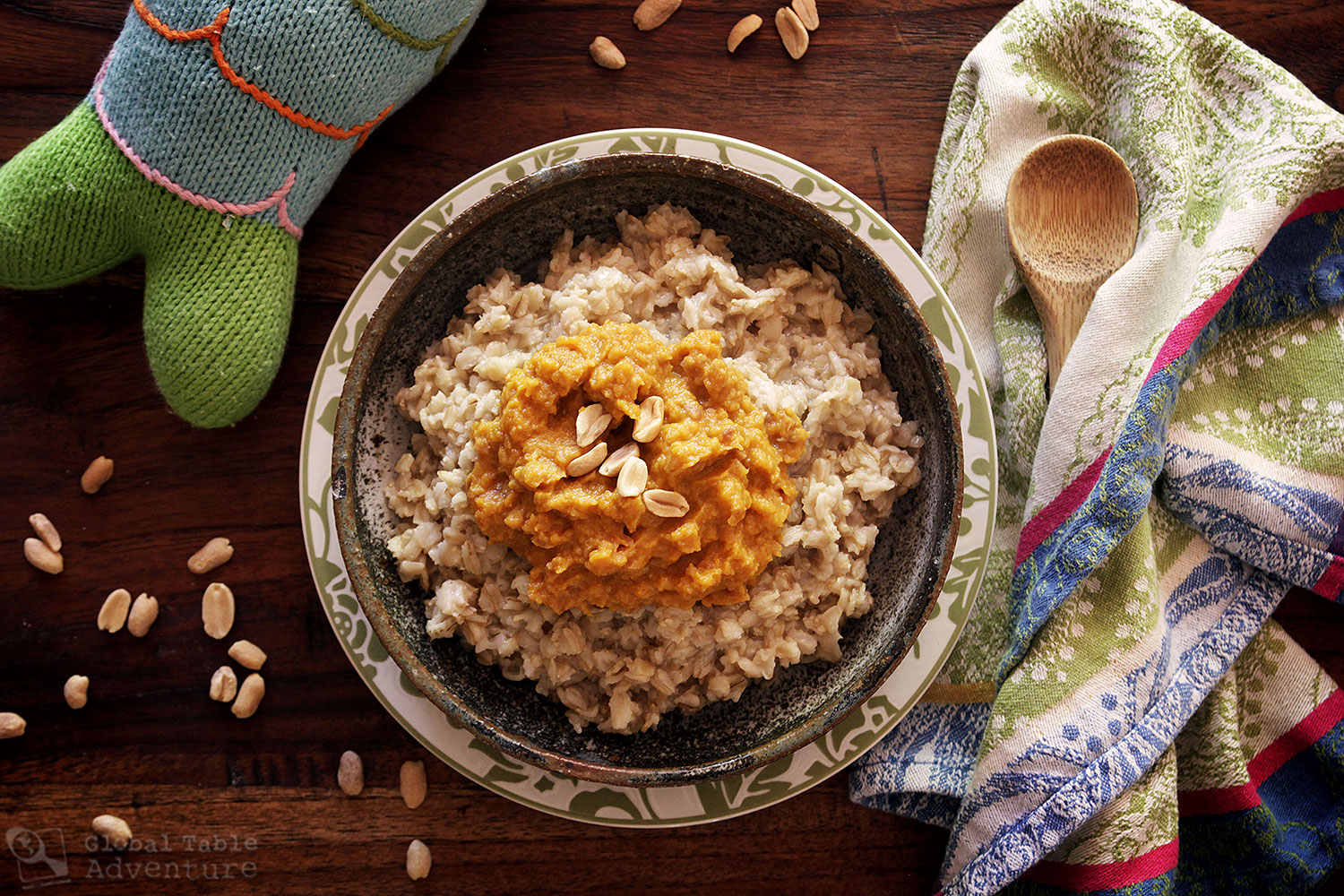
Forget what you know about The Little Mermaid. Zambia’s infamous mermaid, Chitapo, is no dewy-eyed, red-haired princess. To set eyes on this fierce water spirit, paddle along the Zambian/Congolese waterways – along Lake Namulolobwe, down Victoria Falls, into any number of smaller ponds. You might even find her cresting the salty Atlantic. How will you know it’s her? See that shadow caught up in a whirlwind? An elusive figure sunning on a rock, with the body of a woman and the tail of a fish or serpent? That’s Chitapo. Beware: Beautiful Chitapo is not content to observe humans from afar. Pay attention if things seem amiss in your village. Did a woven mat or a few beloved baskets vanish, then reappear a few days later? Is a neighbor’s missing collection of pots and pans now floating on the murky lake? Chitapo pushes this shiny bait in the shallows, luring unsuspecting victims to their untimely death. Tempted to wade into the water to retrieve these prizes? Think you can outwit, or out-muscle this water spirit? Good luck. Even those with unflinching biceps and …
Read More
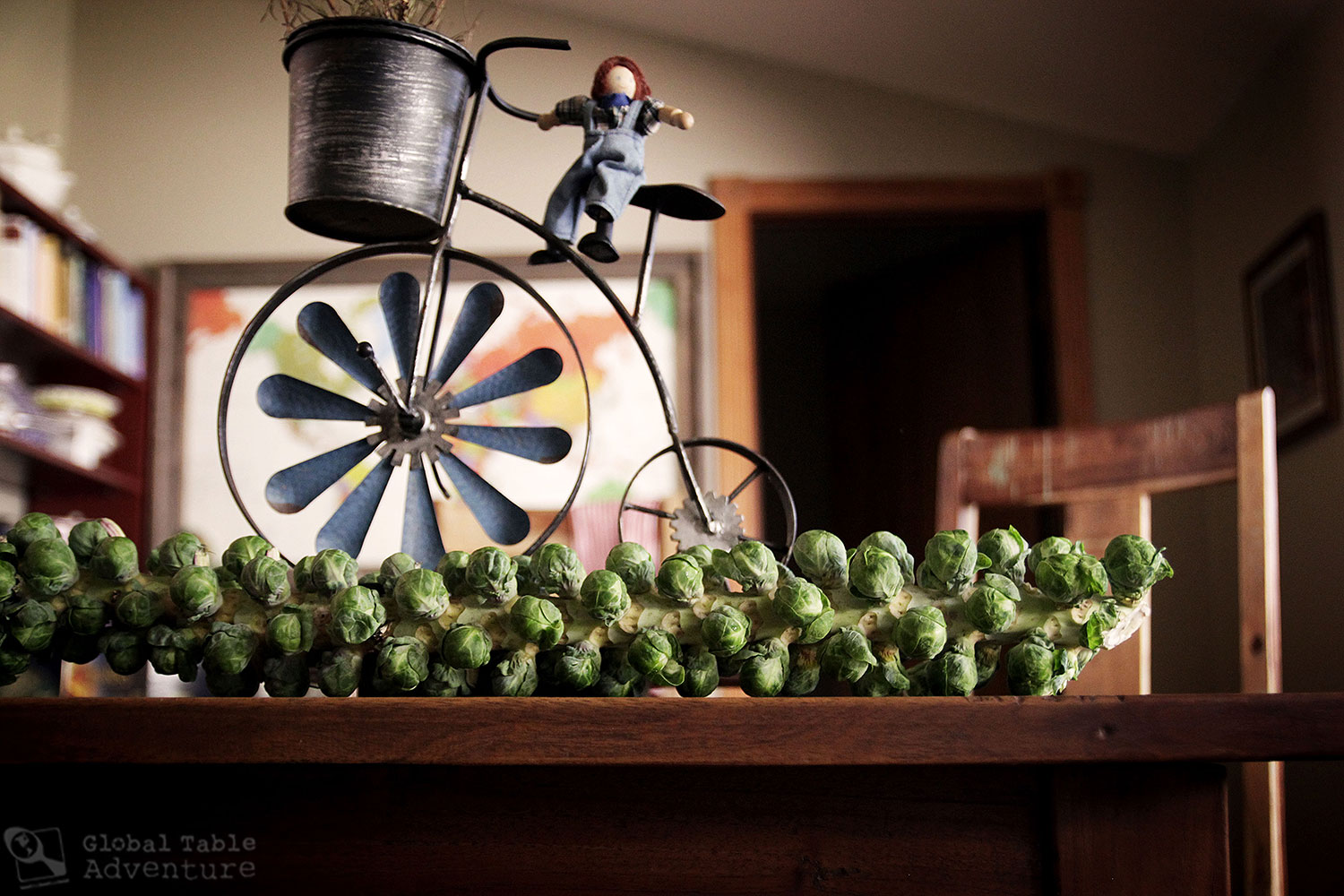
The Holy Grail of Brussels sprouts is a perfectly sauteed specimen. Done poorly, they are stinky, squishy, and muddy in color. Generally, I don’t even bother – preferring instead to roast Brussels sprouts with a bit of olive oil and herbs. Straightforward. Foolproof. Delicious. Long ago I vowed never to disgrace my sprouts by cooking them any other way. But this time of year there’s not much room in the oven for roasted veggies – hefty turkeys, geese, and hams elbow out all semblances of health food. Little choice remains for Brussels sprout fanatics but to relegate our baby cabbages to the stove top. Seeking perfection overseas I began my search for the perfect sauteed Brussels sprout in the logical place – Belgium, whose capital city is the Brussels sprout’s namesake. While several countries enjoy Brussels sprouts (including Italy and the United Kingdom), I figured Belgium would have the largest assortment of recipes to choose from. I was wrong. For starters, of the five Flemish restaurants I looked up in Brussels, none of them had Brussels sprouts on …
Read More
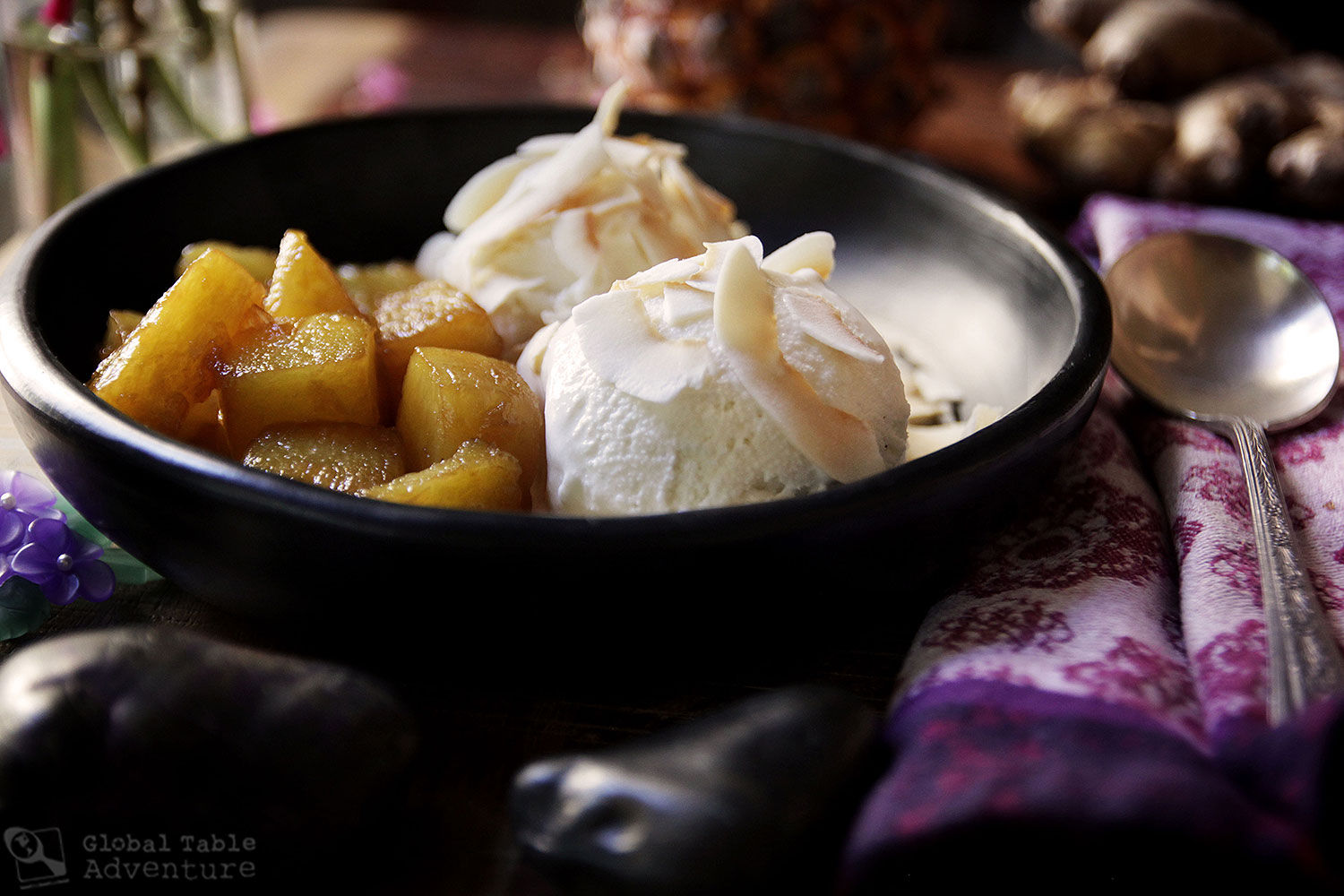
Let’s travel to Sub-Saharan Africa, where the flavors of the tropics make an ordinary ice cream sundae outstanding. Start by harvesting real vanilla beans from Madagascar to make the ice cream. Then head to Nigeria to pluck a heavy, sweet pineapple and a knob of ginger root. Nigeria is the world’s 8th largest producer of pineapple and the 4th largest producer of ginger.* Chunk up the golden fruit, then cook it with brown sugar and a whisper of the freshly grated ginger. Ten minutes on a flame will release the pineapple juices into the brown sugar, making a sticky, caramel-like sauce. Look how tall my little girl is getting… Sometime this fall she stopped using the step stool. I always knew bringing the world into our kitchen was good nourishment, but she grew an inch over the summer. <sigh> When you’re done bemoaning how fast life flies, assemble your ice cream sundae. First: Drop two fat scoops of vanilla ice cream into a shallow bowl. Second: Spoon on the hot pineapple and sauce. Work quickly to sprinkle with lightly toasted …
Read More

Homemade breadsticks are such a grown-up move. Only the most organized adult takes the time to add homemade breadsticks to an already jam-packed dinner party menu. More importantly, only an adult can resist eating all the breadsticks. Aussie breadsticks do not apologize for their allure. These brash wands of dough smirk from their buttery throne – glistening with parmesan and Vegemite – daring you to show restraint before the main course arrives. Once you succumb? You’ll be too full for prime rib, too sleepy for Pavlova. Forget about fitting into anything but elastic. Unless, of course, you’re one of those adults who can take one trim nibble, lay down the breadstick and casually carry on a conversation for 20 minutes without the Medial Forebrain Bundle (that’s the pleasure seeking part of the brain for those who don’t watch Grey’s Anatomy) going into full on panic mode. I’ve always envied people with such restraint. Those are the real grown-ups. I’m 36 years old and still waiting. My husband and daughter? They don’t stand a chance. What is an Aussie breadstick? Aussie …
Read More
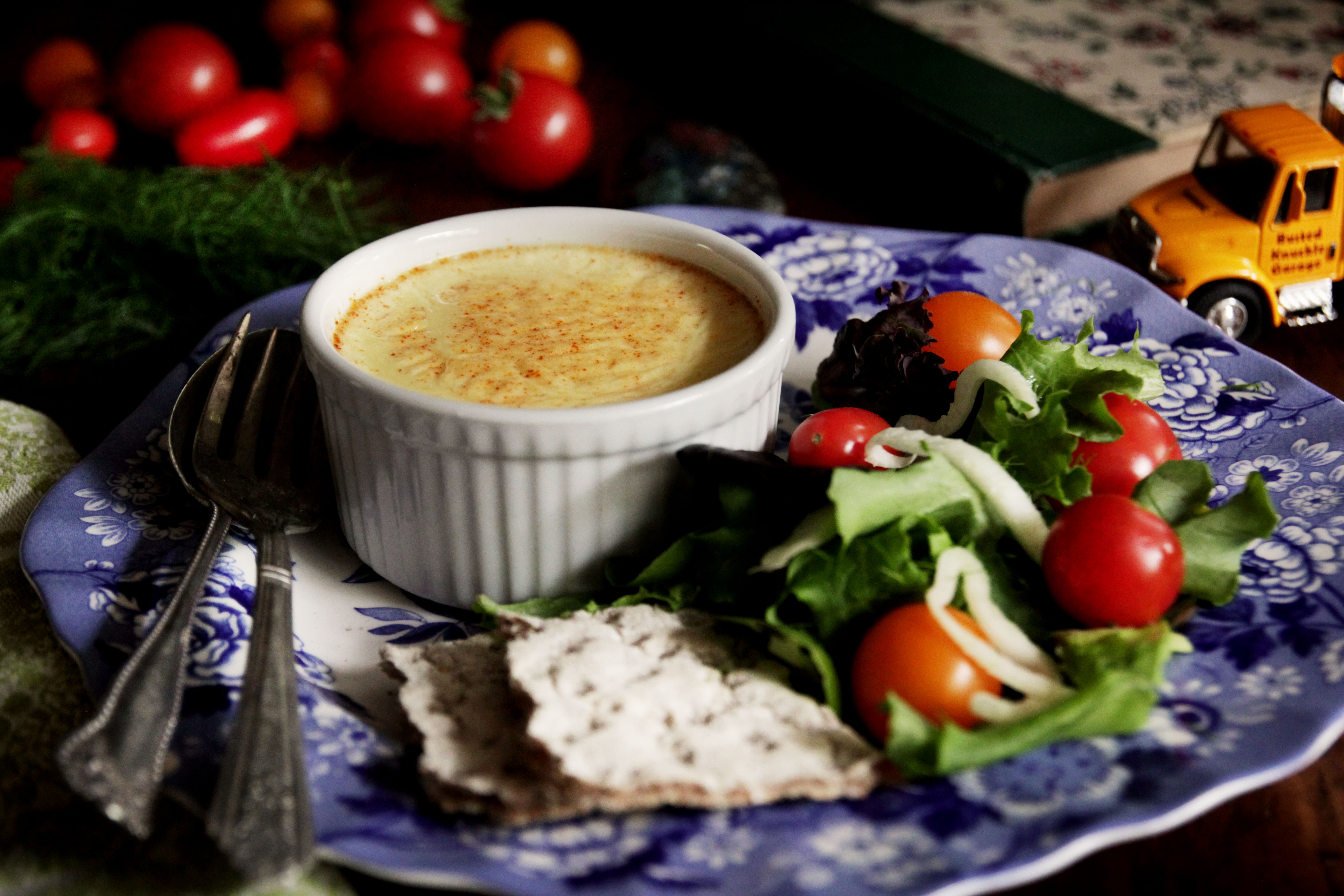
“Winters are long in Sweden,” Alex reminded me. I’d just flipped to the Swedish Cheese Custard in my 100-year old copy of the “Pan Pacific Cookbook” and lifted my eyebrows. My eyebrows lifted further as I scanned the main ingredients – cheese, eggs, and milk. She laughed and nodded. Turns out Cheese Custard is a dairy farmer’s happy place. Perfect after a casual ski through deep snow. But one question remained… Is cheese custard good? Cheese custard is a question mark on this side of the Atlantic Ocean. We don’t typically eat savory chilled custards. But Swede’s know it is a silky, indulgent affair. It’s as if someone took the ingredients to a quiche and mixed them up – there’s fewer eggs, more cheese and much more milk. All that milk? It makes for a delicate spoonful. The most fun? As the custard cools the cheese creates a soft, flaky crust. The golden top looks similar to the crust of France’s often swooned over crème brûlée. My friend recommended using Jalsburg cheese – unless you can find Sweden’s whiskey-cured Prästost. Jalsburg gives the custard a mild, nutty flavor with a little extra …
Read More
Mexicans offer up an unexpected appetizer for the margarita lover in all of us. Take a walk along a Mexican beach and you’re likely to find carts of mangoes being peeled and cut into elaborate flowers and wands. Mango carving is not unique to Mexico – the art can be found wherever the fruit is grown – but Mexican mango flowers smack of lime juice with puffs of chili powder and salt. Just look at this video: I planned to make a mango flower for you today. How could I not? Real Talk: When I tried to replicate his mango carving technique I ran into trouble. My first problem was that the ripe mango slid down any stick I put it on (I tried chopsticks and skewers). And, without the proper handle, carving the flower became a slippery, dangerous mess. By the end of the afternoon I’d hobbled together a few cranky looking flowers but, as I had nothing to stand them on, I’ll leave their appearance to your imagination. The happy solution? A ridiculously simple approach …
Read More
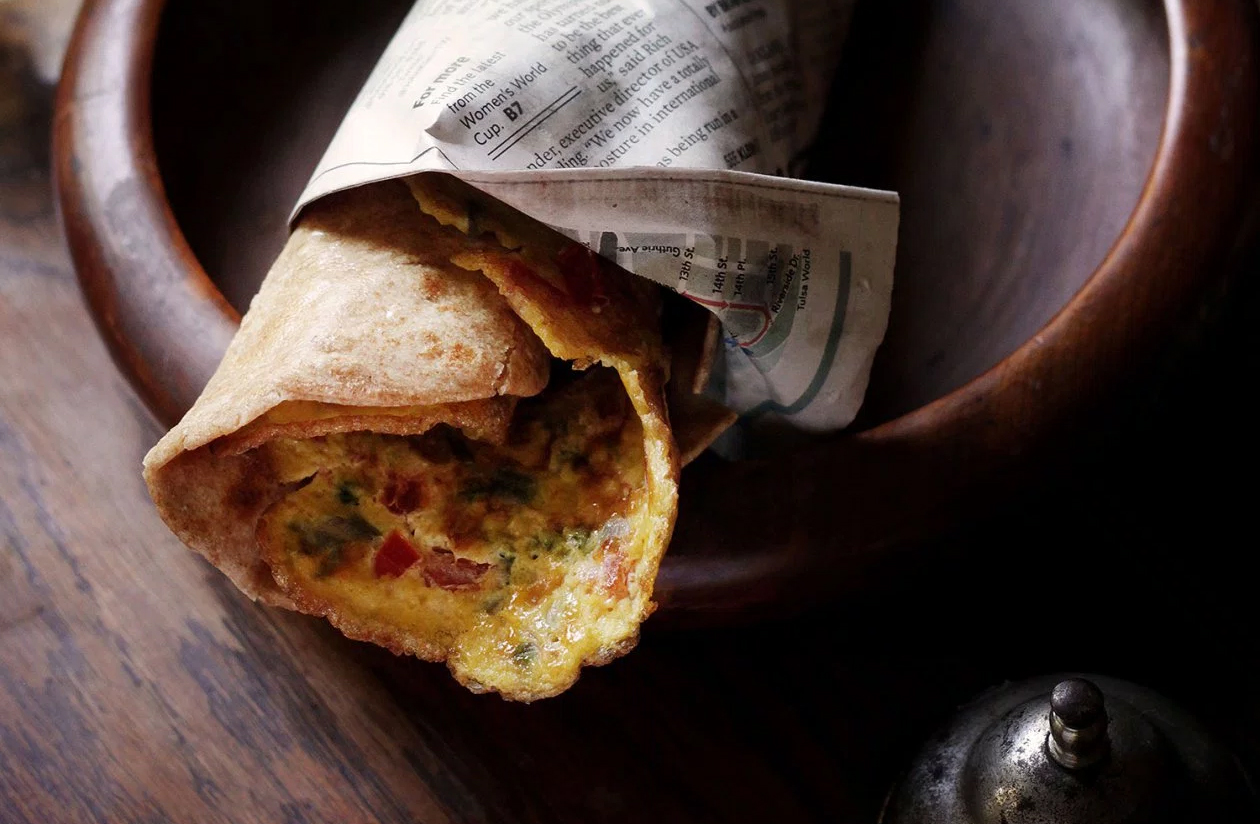
Uganda’s “Rolex” is breakfast luxury that can be purchased on any street corner. Whipped egg is the gold setting. Precious studs of tomato and purple onion glitter across the surface like garnet and amethyst, while fine strands of cabbage sparkle like peridot. The completed jewel is nestled safely in a soft chapati wrap. Ridiculous? Maybe. But shouldn’t every day food be as precious as a “real” Rolex? What is a Ugandan Rolex? Rolex is classic Ugandan street food. The similarity to the luxury watch brand is happenstance: Once upon a time the vendors who made this treat called out “Rolled Eggs” – nothing more. The basic idea is eggs cooked with cabbage, onion, tomato, and sometimes peppers, which is then wrapped in chapati. But, as the words careened off their tongue, “Rolled Eggs” sounded more like “Rolex” to visitors. Gradually the (quite fun) misinterpretation stuck. How do you make a Rolex? To prepare a Rolex in the true Ugandan spirit, a few steps must be followed. First, make your way to Uganda… … and find a welcoming village …
Read More
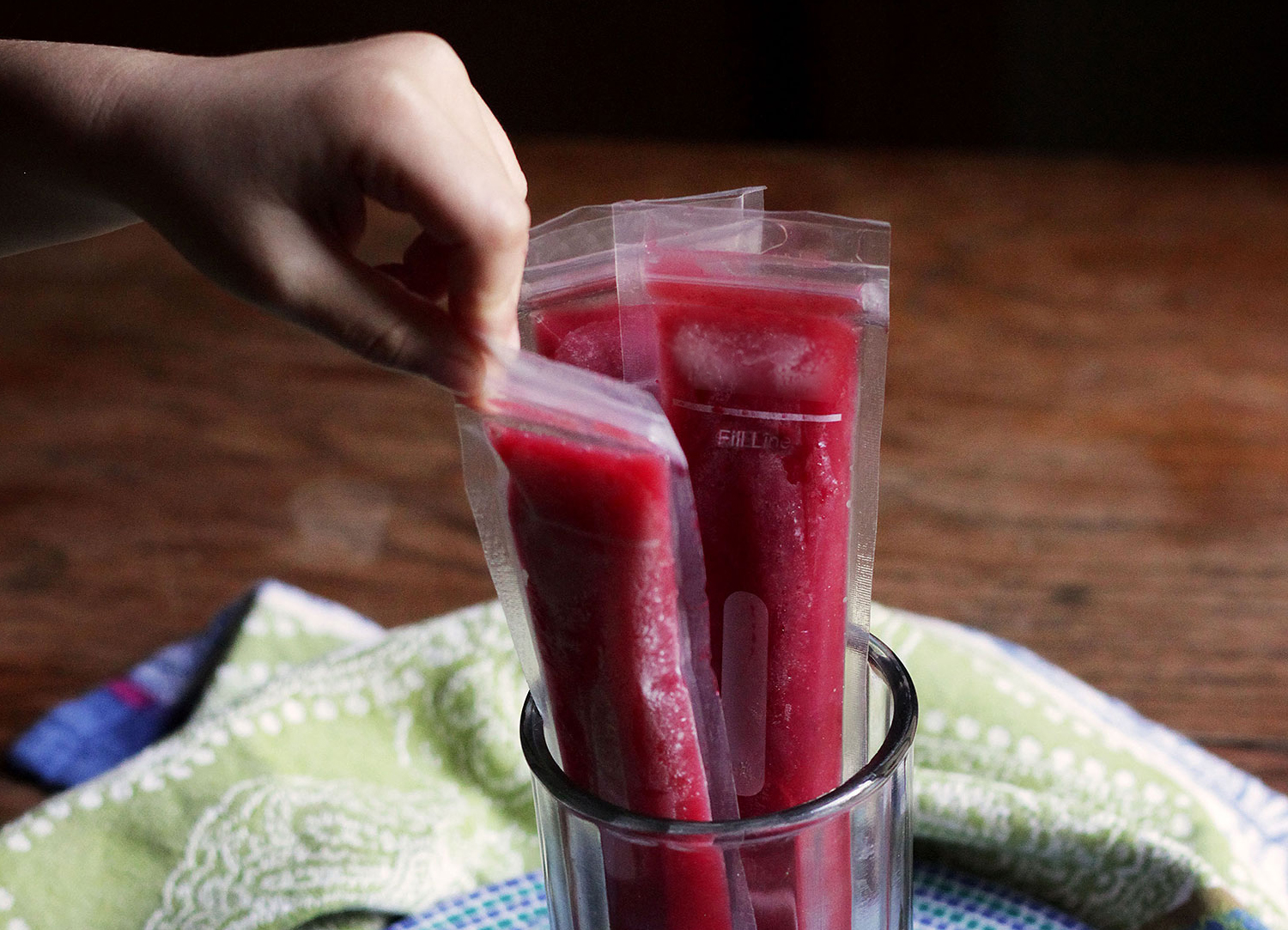
What if summer’s best moments could be frozen in time? Picking berries… Running barefoot through tall grass… Dancing in sun and water alike… The smallest nibble of Paletas delivers a slush of ripe berries, sunshine, and laughter – about as close as I’ve ever gotten to capturing the glitter of the season… a frozen treat straight from Latin America and as precious as these Mexican garnets… … but with much more color. Seriously. These are lovelier than any gemstone… The story behind these paletas is a simple one: I was looking for something my daughter could share with her classmates for her birthday celebration. Keith and I wanted to bring something nutritious and festive. She wanted something sweet and summery (she’s a July 4th baby after all). Meanwhile, some of her classmates are lactose intolerant and gluten-free. The happy solution came in the form of raspberry hibiscus paletas… a Latin-American recipe adapted from Paletas: Authentic Recipes for Mexican Ice Pops, Shaved Ice & Aguas Frescas. You don’t need much. Freshly brewed hibiscus tea. A mound of crimson …
Read More
Summer can’t come soon enough – the heat of sun on my shoulders, the way my skin smells with sunscreen on, hot evenings under the stars. So today we’re going to Samoa. There’ll be drippy sweetness: papaya and cantaloupe. There’ll be richness, too – buttery avocado and moody – almost bitter – spinach. And to finish it all off? A puckering of lime juice – as bright as a Samoan seascape. Typically known for rich, coconut milk-laden recipes, this Samoan salad is a healthier twist on island fare. The version I based mine on even won a Samoan recipe challenge! I chose this salad for sentimental reasons – something to set the scene a bit for the release of my new book Life from Scratch: A Memoir of Food, Family, and Forgiveness. I went to Samoa 2 months before I was born (as a real life stowaway, I suppose). Scientists believe our taste preferences can be affected by what our mother’s ate while we were gestating. I like to think I carry a bit of Samoa with me today. It was an …
Read More
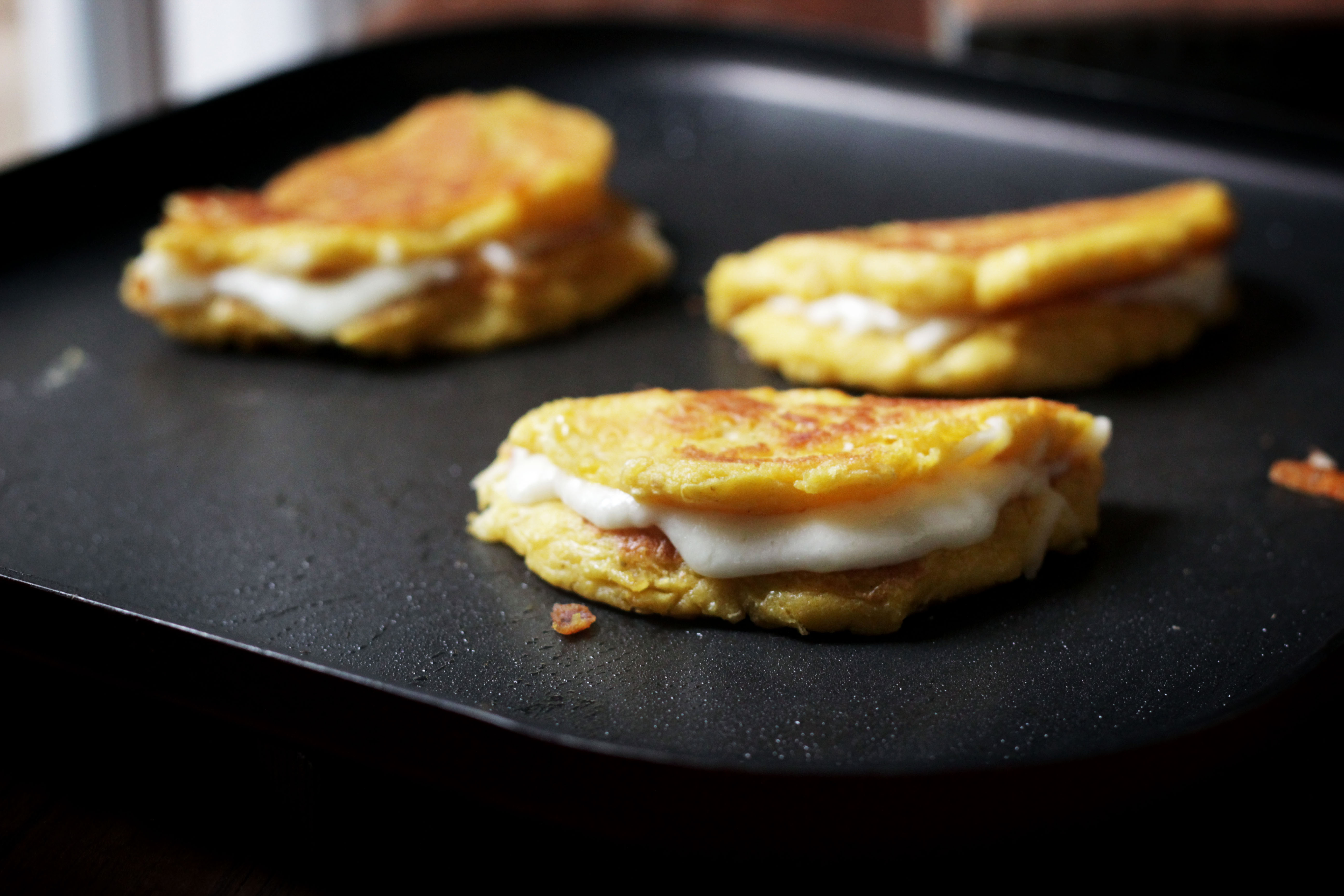
“There’s nothing hidden between heaven and earth.” Venezuelan Proverb Nothing hidden indeed… except, perhaps the cheese inside a steaming, hot Cachapas. Brittle autumn days require an extra slathering of comfort. Ooey gooey cheese-filled corncakes, a.k.a. cachapas fit the bill nicely. Think of them as the South American version of pancakes. The cakes are made with just two ingredients: corn and masa harina, plus the requisite sprinkling of salt and pepper. There’s a simplicity to the recipe that means a batch can be made as easily at midnight as in the afternoon. Which means you can stovetop travel to the beaches of Venezuela any time you like. While you can make cachapas with fresh corn in the fall, you can also use frozen corn any time of year. Corn gives the cachapas sweet overtones. Masa harina – a flour made from hominy, the big-kerneled cousin to corn – binds the mixture together so the corncake holds its shape (all the better for topping with ooey gooey cheese!). Speaking of cheese, the key to the cachapas is to sprinkle them …
Read More








